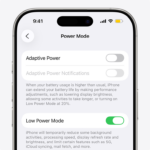Forgetting your MacBook password can be stressful, but changing it is simpler than you might think. Apple has built several ways to update your login credentials in macOS, whether you remember your current password or need to reset it completely. You can change your MacBook password by going to Apple menu > System Settings > Users & Groups, clicking the lock icon, and selecting the Change Password option.
Security is important, but so is being able to access your own device. If you’ve forgotten your password, don’t worry – you have options. You can use Recovery Mode on your MacBook to reset your password without losing data. This works on all models including MacBook Pro and MacBook Air.
Remove or Change Your MacBook Password
Whether you’re looking to change your MacBook password for security reasons or want to remove it entirely for easier access, macOS makes it simple. Here’s a step-by-step guide for both options, tailored for macOS Ventura, Sonoma, and newer.
Why You Might Want to Change or Remove Your Password
- Change your password if you think your current one is compromised or too weak.
- Remove your password (or set automatic login) if you’re the only one using the Mac and want to streamline startup.
⚠️ Important Note: Removing a login password can reduce your Mac’s security, especially if it’s a laptop that could be lost or stolen.
How to Change Your MacBook Password
Method 1: Change Your Login Password from System Settings
- Click the Apple menu in the top-left corner.
- Choose System Settings (or “System Preferences” on older versions).
- Click Users & Groups from the sidebar.
- Select your user account on the right.
- Click Change Password…
- Enter your current password, then your new password twice.
- (Optional) Add a password hint.
- Click Change Password.
✅ Tip: Choose a strong password that includes upper and lower case letters, numbers, and symbols.
How to Remove Your MacBook Password (Enable Automatic Login)
macOS doesn’t allow a password to be completely blank, but you can set your Mac to log in automatically:
Method 2: Set Up Automatic Login
- Open System Settings.
- Go to Users & Groups.
- Scroll down and click Login Options.
- Click the lock 🔒 icon to authenticate with your admin password.
- Click the dropdown menu next to Automatic Login.
- Select your account and enter your password to confirm.
✅ Your Mac will now boot straight to the desktop without requiring a password at startup.
⚠️ You’ll still need your password for:
- Waking from sleep
- Installing software
- Making system changes
- Using Touch ID or Apple Pay (if supported)
🧠 Forgot Your Mac Password?
If you forgot your MacBook password, here’s how to reset it:
Option 1: Use Your Apple ID (if set up)
- After entering the wrong password 3 times, you’ll see a message: “If you forgot your password, you can reset it using your Apple ID.”
- Click the arrow → and follow the instructions to reset using your Apple ID.
Option 2: Use Recovery Mode
- Restart your Mac and hold Power (Apple Silicon) or Command + R (Intel) to enter macOS Recovery.
- From the top menu, choose Utilities > Terminal.
- Type
resetpasswordand hit Return. - Follow the on-screen instructions to reset your password.
Security Considerations
- If you enable FileVault encryption, automatic login will be disabled.
- Avoid removing passwords on shared or portable Macs.
- Consider using Touch ID (if available) for fast but secure access.
Summary Table
| Task | Steps |
|---|---|
| Change Password | System Settings → Users & Groups → Your Account → Change Password |
| Enable Auto Login | Users & Groups → Login Options → Enable Automatic Login |
| Forgot Password | Use Apple ID or macOS Recovery to reset |
| Remove Password Completely | Not allowed; only auto login can bypass it |
Bonus Tip: Use a Password Manager
If you’re managing multiple passwords, tools like 1Password, Bitwarden, or Apple’s iCloud Keychain can help you stay secure without the hassle of remembering everything.
Key Takeaways
- Changing your password requires going to System Settings, Users & Groups, and clicking the lock icon to make changes.
- Recovery Mode lets you reset a forgotten password by typing “resetpassword” in Terminal.
- Your Apple ID can be used as a backup method to regain access to your locked MacBook.
Understanding the Role of Passwords on Your MacBook
Passwords on your MacBook serve as the first line of defense against unauthorized access to your personal data and settings. They work alongside built-in security features to keep your information safe.
The Purpose of User Authentication
Your MacBook password acts as a key that unlocks your computer. When you set up a password, you create a barrier that prevents others from accessing your files, photos, emails, and other personal information.
This password connects to your user account, which stores all your personal settings and files. Without the correct password, no one can log in as you or change important system settings.
Think of your password as a digital lock for your MacBook. Just like you wouldn’t leave your house unlocked, you shouldn’t leave your computer without password protection.
Strong passwords use a mix of letters, numbers, and symbols. Avoid using easy-to-guess information like birthdays or pet names.
Encryption and Security Features
Beyond simple access control, your MacBook password works with powerful security tools. One key feature is FileVault, which encrypts your entire hard drive.
When FileVault is turned on, all data on your Mac is converted into unreadable code. Only someone with the right password can decode and access this information.
This encryption happens automatically in the background. If someone tries to access your files by removing your hard drive or booting your Mac in a different way, they’ll only see scrambled data.
Your password also protects other security features like:
- Keychain Access: Stores passwords for websites and apps
- System settings changes: Prevents unwanted modifications
- Private information: Secures personal data from prying eyes
Apple has designed these security features to work together with your password to create layers of protection for your digital life.
Preparation Before Changing or Removing Your MacBook Password
Taking a few important steps before changing your MacBook password can save you from potential headaches. Good preparation prevents data loss and ensures you can still access your computer if something goes wrong.
Backup Your Data With Time Machine
Before changing any passwords on your MacBook, it’s crucial to back up your data. Time Machine provides an easy way to create complete backups.
To set up Time Machine:
- Connect an external hard drive to your Mac
- Click the Apple menu in the top left corner
- Select “System Settings” (or “System Preferences” on older systems)
- Click on “Time Machine”
- Click “Select Backup Disk” and choose your external drive
Time Machine will automatically back up your entire system, including documents, photos, apps, and settings. This ensures you can recover everything if problems occur during the password change process.
Make sure the backup completes before proceeding with any password changes. A full backup may take several hours if it’s your first time using Time Machine.
Ensure Accessibility to Your Apple ID
Your Apple ID password is your safety net when recovering access to your Mac. Before changing your MacBook password, verify you know your current Apple ID credentials.
Check these items:
- Know your Apple ID email and password
- Ensure two-factor authentication is set up but that you have access to your trusted devices
- Verify recovery methods are current (phone numbers, backup email)
If you’re unsure about your Apple ID password, visit appleid.apple.com to test your login. Reset your Apple ID password first if needed.
Having access to another device signed into the same Apple ID can help if you get locked out of your Mac. This provides an alternative way to receive verification codes.
Methods to Change Your MacBook Password
MacBooks offer straightforward ways to update your password for better security. You can change your password directly through system settings or use your Apple ID if you’ve forgotten the current one.
Through System Preferences
Changing your MacBook password through System Preferences is quick and simple. To get started, click on the Apple menu in the top-left corner of your screen. Then select System Preferences.
On newer macOS versions, you’ll need to:
- Choose Apple menu > System Settings
- Click Users & Groups in the sidebar
- Select your user account
- Click the Change button next to Password
On older macOS versions:
- Open System Preferences
- Click Users & Groups
- Click Change Password
You’ll need to enter your current password first, then type your new password twice to confirm. Add a password hint if needed, but keep it vague enough that only you understand it.
Using Apple ID for Reset
If you’ve forgotten your MacBook password, your Apple ID can help. Make sure your Mac is connected to the internet before starting this process.
First, try entering an incorrect password three times at the login screen. Your Mac will show a message that you can reset your password using your Apple ID.
If that option doesn’t appear, you can:
- Restart your Mac
- Hold Command+R while it boots to enter Recovery Mode
- Select Utilities from the menu
- Open Terminal
- Type resetpassword (as one word) and press Return
- Follow the prompts to create a new password
After resetting your password, you might need to update your login keychain. Your Mac will usually prompt you to do this when you log in with your new password.
Resetting Password in macOS Recovery Mode
Resetting a forgotten Mac password through Recovery Mode is a built-in solution that doesn’t require additional software. This method works on most Mac computers, including those running recent versions like macOS Ventura.
Initiating Recovery Mode Process
To start the password reset process, first turn off your Mac completely. Now restart your Mac while holding down Command+R until you see the Apple logo or spinning globe. This key combination boots your computer into Recovery Mode.
Wait for the macOS utilities window to appear on screen. This may take a minute or two depending on your Mac’s speed. If you’re using a Mac with Apple silicon (M1 or newer), the process might look slightly different – you’ll need to hold the power button until startup options appear.
For Macs with FileVault encryption turned on, you might be asked for a FileVault recovery key before proceeding. Have this ready if applicable.
Using the Reset Password Utility
Once in Recovery Mode, look for the Utilities menu at the top of the screen. Click on it and select “Terminal” from the dropdown menu. In Terminal, type resetpassword and press Return.
The Password Reset tool will open, showing all user accounts on your Mac. Select the user account whose password you need to reset.
Enter a new password in the fields provided. Make sure to choose a strong but memorable password. You’ll also need to add a password hint as a reminder.
Click “Reset” to confirm your new password. After resetting, restart your Mac and log in with your new password. You might need to update your keychain password when prompted.
Advanced Password Reset Techniques
When standard password reset methods don’t work, you can try more technical approaches to regain access to your MacBook. These methods require more technical knowledge but can be effective when other options fail.
Utilizing Terminal Commands
Terminal offers powerful ways to reset your MacBook password when locked out. If you can access Recovery Mode, this method works well.
To use Terminal for password reset:
- Restart your Mac and hold Command+R to enter Recovery Mode
- Open Terminal from the Utilities menu
- Type
resetpasswordand press Return
This launches the Password Reset Assistant tool which lets you reset the password for any user account on your Mac. The tool will show all user accounts on your system.
If FileVault is enabled, you might need the recovery key. FileVault encrypts your disk, making password recovery more complex.
For newer Mac models with T2 chips or Apple Silicon, you might need to use different approaches since security is tighter.
Accessing Single User Mode
Single User Mode gives you direct access to your Mac’s core system through command line. This works for Intel-based Macs, though newer models have restrictions.
To use Single User Mode:
- Restart your Mac
- Immediately press and hold Command+S
- Wait for the command line interface to appear
- Mount the drive by typing:
/sbin/mount -uw / - Type:
passwd username(replace “username” with your account name) - Enter and confirm your new password
- Type
rebootto restart
If you have trouble with Disk Utility or mounting issues, try the command fsck -fy before mounting the drive. This checks your disk for errors.
For Macs with System Integrity Protection (SIP), you may need to disable this feature first. Remember to enable it again after password reset for security.
Recovering From Forgotten Password Scenarios
Forgetting your MacBook password can be stressful, but Apple provides several ways to regain access to your device. These methods help you recover your account without losing important data.
Deciphering Password Hints
Password hints can save you from a complete reset. When you set up your Mac account, you likely created a hint to jog your memory. This hint appears after three incorrect password attempts on the login screen.
Try variations of your usual passwords based on the hint. Consider:
- Different capitalizations
- Numbers that might be relevant
- Special characters you commonly use
If your hint mentions a date or name, try combinations with those elements. Many users include birth years, anniversaries, or pet names in passwords.
For newer Macs, you’ll see an option to reset your password using your Apple ID after several failed attempts. Click the question mark icon in the password field or the “Forgot password?” option if available.
Leveraging Your Recovery Key
A recovery key provides a powerful backup when you’ve forgotten your password. If you set up FileVault encryption, you might have created a recovery key during setup.
To use your recovery key:
- Restart your Mac
- At the login screen, try three incorrect passwords
- Look for the recovery key option
- Enter your recovery key exactly as it appears
Recovery keys are case-sensitive and must be entered precisely. If successful, you’ll be prompted to create a new password.
For Macs with T2 security chips or Apple Silicon, you can also reset your password through Recovery Mode. Restart while holding Command+R, then use Terminal to launch the password reset tool.
If you use iCloud with your Mac, you can reset your password using your Apple ID even without a recovery key. This method works without data loss.
Completely Removing Your Password With a Factory Reset
Factory resetting your MacBook gives you a fresh start when you’ve forgotten your password or are preparing to sell your device. This process erases all data on your Mac and reinstalls a clean version of macOS.
Starting a Factory Reset on Your MacBook
To begin a factory reset on your MacBook, you’ll need to boot into Recovery Mode. Turn off your Mac completely, then turn it on while holding Command+R until you see the Apple logo or spinning globe.
If you’re locked out of your account, you can use Recovery Assistant. When prompted to select a user, you can choose Recovery Assistant > Erase Mac from the menu bar at the top of your screen.
For users who can still access their system, the process is simpler:
- Click the Apple icon in the top left corner
- Select System Settings (or System Preferences on older Macs)
- Click General and scroll down to Transfer or Reset
- Choose Erase All Content and Settings
Always back up important files before proceeding, as this process permanently deletes all data on your Mac.
Reinstalling macOS Post-Factory Reset
After erasing your Mac, you’ll need to reinstall the operating system. Your Mac will automatically guide you through this process following the reset.
When the macOS Utilities screen appears, select “Reinstall macOS” and follow the on-screen instructions. The system will download and install a fresh copy of macOS from Apple’s servers.
This installation typically takes 30-60 minutes depending on your internet speed. Your Mac may restart several times during this process.
Once installation completes, you’ll see the Setup Assistant. Here you can:
- Set up as a new Mac (no password)
- Restore from a Time Machine backup
- Transfer data from another Mac
If setting up as new, you’ll create a fresh user account with a new password of your choice. The old password will be completely removed, and you’ll have a clean system to work with.
After Password Removal or Change
Once you’ve changed your MacBook password, it’s important to set up security features to protect your account and ensure you don’t get locked out again. Taking a few extra steps now can save you trouble later.
Setting Up a New Password
Creating a strong new password is key to keeping your Mac secure. When choosing a new password, mix uppercase and lowercase letters, numbers, and symbols. Avoid using personal information like birthdays or names.
Your password should be:
- At least 8 characters long
- Not a common word or phrase
- Different from passwords you use on other accounts
Write down your password and store it in a safe place or use a password manager. Many users find it helpful to make a password that forms a pattern on the keyboard or creates a mental image that’s easy to remember.
If you share your Mac with others, make sure each person has their own user account with a unique password for better security.
Ensuring Password Recovery Options Are Configured
Setting up recovery options helps you regain access if you forget your password again. The most important recovery method is linking your Apple ID to your Mac account.
To set this up:
- Go to System Settings (or System Preferences)
- Click Users & Groups
- Make sure your Apple ID appears under your account
Adding a password hint can jog your memory if you forget. Keep hints vague enough that others can’t guess your password but clear enough to help you remember.
For extra protection, consider enabling FileVault disk encryption. This adds another layer of password protection for your files. You can turn it on in System Settings under Security & Privacy.
Remember to update your login keychain with your new password to avoid multiple password prompts when using apps and services on your Mac.
Seeking Further Assistance
If you’re still having trouble with your MacBook password after trying the methods above, Apple offers professional help options. These services can guide you through complex password issues or provide hands-on assistance.
Contacting Apple’s Tech Support
Apple’s technical support team can help with password reset problems on your MacBook Pro or MacBook Air. You can reach them in several ways:
- By phone: Call 1-800-MY-APPLE (1-800-692-7753) for direct assistance
- Through the Apple Support website
- Via the Apple Support app on your iPhone or iPad
- Using online chat on the Apple Support page
When contacting tech support, have your device serial number ready. You’ll also need to verify your identity as the owner. The support team can walk you through additional reset methods or help with Apple ID recovery if that’s causing the password issue.
For complex situations, they might schedule a screen sharing session to guide you through the steps.
Visiting an Apple Store or Authorized Service Provider
Sometimes in-person help is the best solution for password issues. Make an appointment at the Genius Bar in an Apple Store or visit an Authorized Service Provider nearby.
Before your visit:
- Bring photo ID that matches the name on your Apple ID
- Take your MacBook and its charger
- Know your Apple ID email and password (if possible)
- Backup your data beforehand if you can access it
The technicians at Apple Stores can help with:
- Password resets using specialized tools
- Recovery of data if needed
- Hardware issues that might be causing login problems
If you’re far from an Apple Store, an Authorized Service Provider offers similar services with Apple-certified technicians.
Frequently Asked Questions
MacBook password management can be tricky at times. These questions cover the most common password issues users face with their Apple computers.
What are the steps to reset a forgotten MacBook login password?
If you’ve forgotten your MacBook login password, you can reset it by restarting your Mac. After restarting, enter your user account password if you remember it.
If you can’t remember the password, you can use the reset options in the login window. Look for a question mark near the password field or password hint that might help you remember.
For newer macOS versions, you might be prompted to use your Apple ID to reset the password.
How can one change their MacBook Air password through system preferences?
Changing your MacBook Air password through System Preferences is simple. First, click on the Apple menu in the top-left corner of your screen.
Next, select System Preferences (or System Settings in newer macOS versions). Then click on Users & Groups.
Click the Change Password button. Enter your old password and then type your new password twice to confirm it. Finally, click Change Password to save your changes.
Is it possible to change a MacBook password using the Terminal, and how?
Yes, you can change a MacBook password using Terminal. To do this, go to “Utilities” in the Apple menu and select “Terminal.”
Type “resetpassword” as a single word and press Return. This opens the Password Reset utility.
Select the main hard drive, choose your user account, and enter a new password. This method can be helpful when other options aren’t working.
What should one do if there is no question mark when a MacBook password is forgotten?
If there’s no question mark visible when you’ve forgotten your password, try restarting your Mac in Recovery Mode. Hold Command+R during startup until the Apple logo appears.
Once in Recovery Mode, select Utilities from the menu bar and open Terminal. Type “resetpassword” and press Return to access the password reset tool.
This method works on most Mac computers and provides an alternative when the login screen doesn’t show password reset options.
Can a MacBook’s login password be removed, and what is the procedure?
Yes, a MacBook’s login password can be removed, but it’s not recommended for security reasons. To remove a password, go to System Preferences or System Settings and click on Users & Groups.
Click the Change Password button. Enter your current password in the first field, then leave the new password fields blank.
Click Change Password to remove it. Remember that removing your password makes your Mac vulnerable to unauthorized access.
How do you alter a MacBook’s password using an iPhone or another Apple device?
You can use your iPhone to reset your Mac password if you’ve set up the devices with the same Apple ID and have two-factor authentication enabled. Make sure both devices are near each other with Bluetooth turned on.
On your Mac’s login screen, if you see a message about using your Apple device to reset your password, follow the prompts. A notification will appear on your iPhone.
Unlock your iPhone, tap on the notification, and follow the instructions to create a new password for your Mac.







